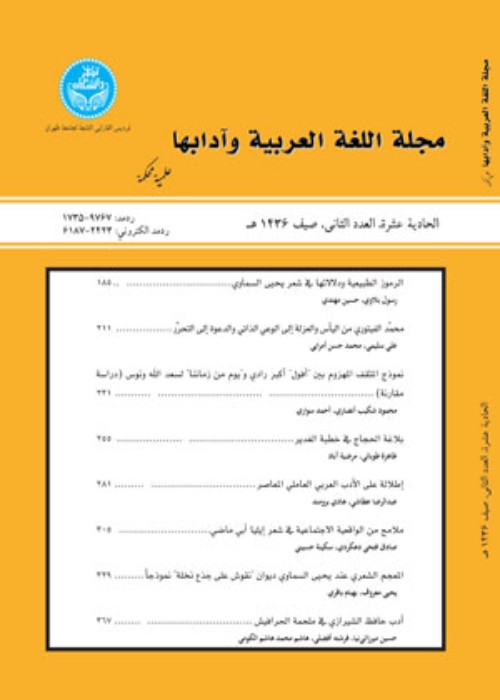From the semiotic square to the tense semiotic square A semiotic study of the thirty-fourth sermon in Nahj al-Balagha as a model
This article has been concerned with analyzing the "thirty-fourth" sermon of Nahj al-Balagha according to Grimas' semiotic studies, for semiotics study the implicit connotations behind literary texts. What leads researchers to a semiotic analysis of the “thirty-fourth” sermon is the knowledge of the levels of the semantic sermon. Based on this, the study of the “thirty-fourth” sermon is within the framework of Grimas’ semiotic studies, especially his semiotic square. This is due to the fact that the Imam (peace be upon him) in his speech used special signs at the level of vocabulary and music that lead to the emergence of moral relationships, including the relationship of contradiction, the relationship of implication and the relationship of opposition to the transmission of meaning. Through this article, we aim to break down the major intangible units to reveal the smaller units generated. The study relies on the descriptive-analytical approach according to the proposed theoretical framework and the detection of the surface structure and the deep structure in it from the perspective of semiotic mechanisms. As for the results of the study, they include that the process of transferring meaning in the studied sermon applies to Grimas' semiotic theory. The semiotic square reveals the important semiotic connotations: pride, humiliation, awakening, and heedlessness. And the Imam (peace be upon him) raises the level of perception of the addressee through the two relations of contradiction and antagonism that play an important role in conveying an implicit goal of the Imam (peace be upon him) to the recipient, which is the result of negative negligence in matters, foremost of which is defeat. As for the semiotic structure, it denotes the meanings of “discontent”, “neglect”, “desperation”, “fighting” and “justice” during the upward, downward and progressive patterns.
- حق عضویت دریافتی صرف حمایت از نشریات عضو و نگهداری، تکمیل و توسعه مگیران میشود.
- پرداخت حق اشتراک و دانلود مقالات اجازه بازنشر آن در سایر رسانههای چاپی و دیجیتال را به کاربر نمیدهد.


